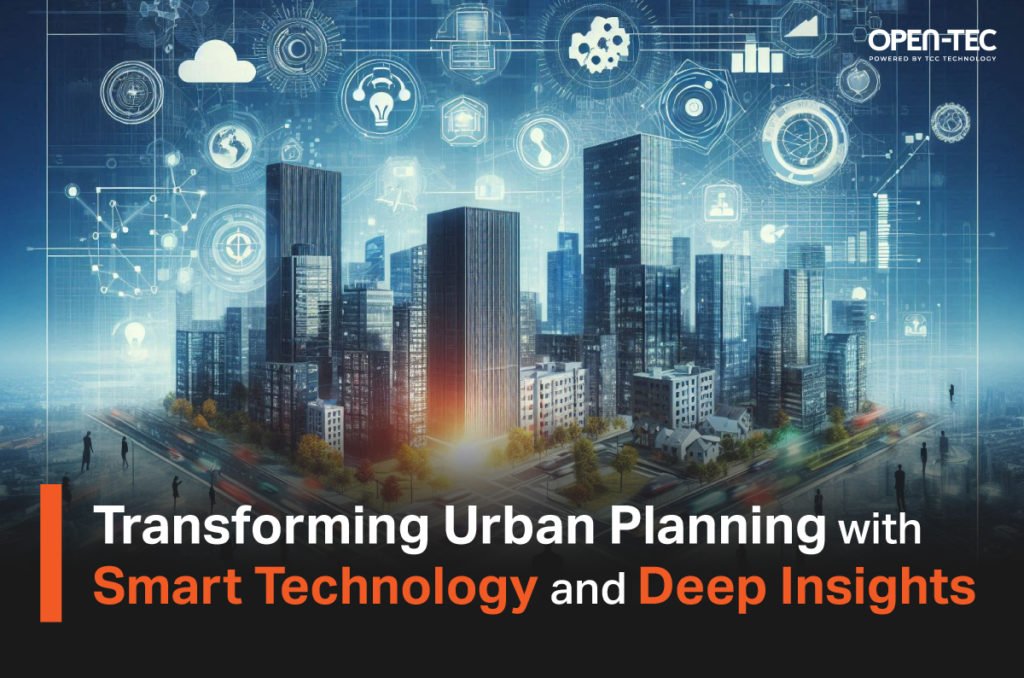Current technology is not just changing the way people live, but is also transforming how they think, learn, and cope with challenges in the modern world. Cities that were once merely backdrops to daily life are now transitioning into intelligent systems capable of observing, analyzing, and making decisions intelligently. The goal is to create sustainable, safe environments that comprehensively address people’s needs across all dimensions and timeframes. Today, OPEN-TEC, Tech Knowledge Sharing Platform, powered by TCC TECHNOLOGY GROUP, will delve into a new era that significantly elevates cities’ capabilities to think.
City Driven by Digital Systems: From Sensors to Intelligent Systems
Smart city development begins with installing sensors connected to high-speed networks to collect real-time data among traffic, energy consumption, air quality, and public services. The data is presented through dashboards to support efficient urban management. However, modern cities have advanced far beyond data collection and monitoring, now able to analyze, predict, and make proactive decisions. By implementing artificial intelligence (AI) and deep data simulation technologies, cities can formulate hypotheses, such as the impact of toll adjustments on traffic volume, or the effects of changing public transportation routes on air quality and citizens’ service accessibility. These processes help reduce risks, increase efficiency, and create policies that more precisely address urban needs.
Artificial Intelligence: From Tool to Urban Planning Partner
AI in the current era is emerging as a decision-making assistant that comprehensively understands urban systems. AI can process various types of data including text, video, sensor signals, and spatial data to analyze and propose accurate policy approaches. One important technology is Agent-Based Simulation, which creates simulated cities with virtual populations exhibiting human-like behaviors such as commuting, living, and interacting with the environment. This enables planners and executives to modify policies in simulated worlds to assess impacts before real implementation, reducing risks and increasing accuracy in effective urban planning.
From Data Silos to Intelligent Integration
One major obstacle in past smart city development was the compartmentalized work of departments. Large amounts of data were stored in disconnected systems, resulting in delayed analysis and decision-making, lack of overview, and slow response to situations. New generation AI technology, particularly large models and Edge AI, is eliminating these limitations. A clear example is CCTV cameras that previously only recorded footage can now process real-time data, detect abnormal behavior, and immediately alert control centers to adjust traffic signals or dispatch personnel. Such systems operate seamlessly at both local and central levels, enabling cities to respond to events more quickly and accurately. This level of data integration and intelligent decision-making increases flexibility in urban management, efficiently connects data from various sources, and designs public services that align with reality and continuous urban changes.
Lastly, we are in a transitional period toward the era of smart cities, which are not merely residential areas but systems that learn, adapt, and grow alongside people. The main goal of modern cities is to create livable, equitable cities that provide equal access to resources and services for everyone. However, achieving such goals requires cooperation from government, private sector, and citizen. Many factors drive cities toward a truly sustainable future that addresses all needs: establishing common standards and management with vision, willingness to experiment, and commitment to reliable data as the foundation for decision-making.
Source: The content was compiled by OPEN-TEC Tech Knowledge Sharing Platform under TCC TECHNOLOGY GROUP at InfoComm Asia 2025.
